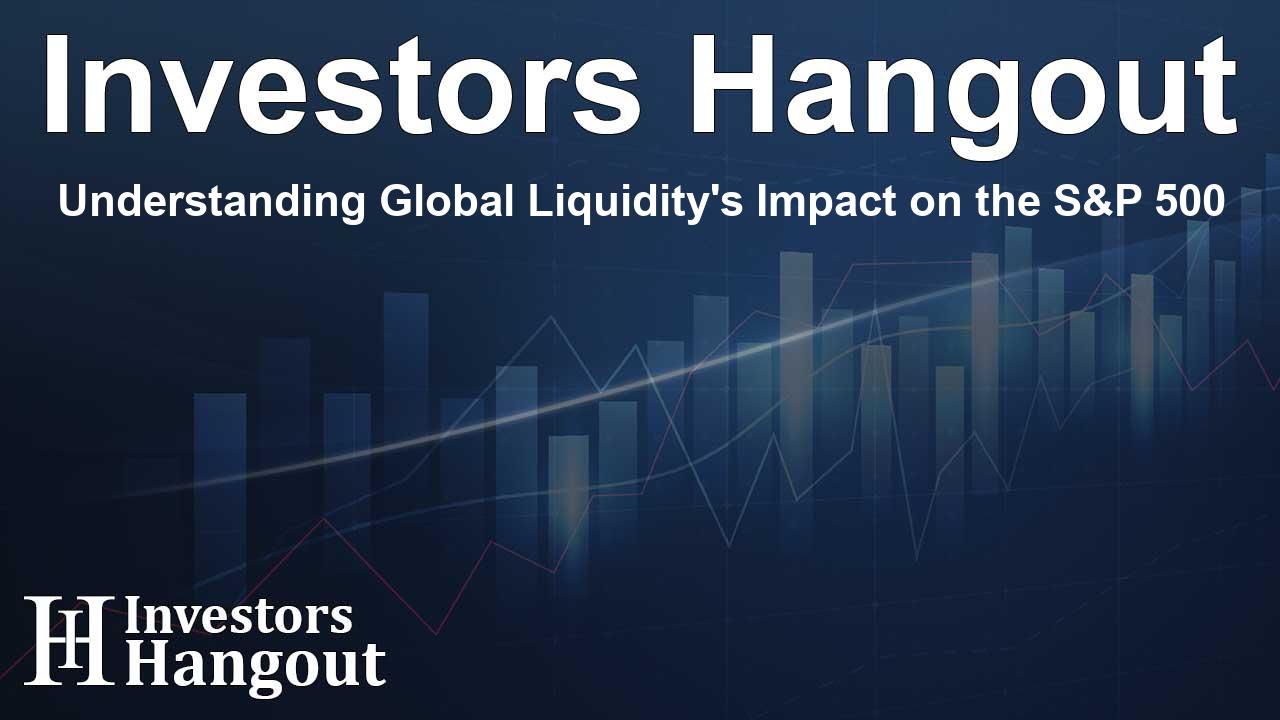Understanding Global Liquidity's Impact on the S&P 500

Understanding Global Liquidity's Impact on the S&P 500
Investors often question how to effectively gauge the performance of the S&P 500, with some indicating there's a means to predict its movements with an impressive correlation. While this may sound incredible, the significant truth reveals itself upon closer examination.
Key Indicators for Long-Term Investors
Typically, when investors seek positive signals for the S&P 500's trajectory, they tend to focus on a few well-known metrics. These include the U.S. Consumer Price Index (CPI), interest rates, and the M2 money supply, which reflects liquid assets in the U.S. economy.
The Overlooked Global Perspective
However, putting excessive emphasis on these indicators alone can cloud judgment. It's crucial to recognize the global nature of the U.S. stock market. While citizens of various countries predominantly invest within their borders — like Germans favoring domestic stocks — American investors are often more willing to embrace global giants such as Nvidia, Apple, and Microsoft.
The Mechanics of Global Investing
When central banks implement monetary policy, the resulting liquidity enters the respective economies. A portion of that liquidity, certainly, finds its way into the stock market, specifically focusing on the S&P and its constituents.
This understanding leads to an essential realization: focusing solely on U.S. liquidity isn't sufficient for accurate predictions. Investors must cast a wider net and delve into global liquidity factors.
The Challenge of Measuring Global Liquidity
Unfortunately, measuring global liquidity effectively poses its own challenges. Financial platforms often do not provide a comprehensive global liquidity metric, prompting many investors to limit their analysis to the contributions from the world's major central banks. These include:
- Bank of Japan
- Federal Reserve
- Bank of England
- European Central Bank
- People's Bank of China
The actions of these banks play a crucial role in shaping global liquidity and consequently, influence the S&P 500.
The Comprehensive Approach to Market Prediction
Many investors often go astray by focusing chiefly on the Federal Reserve’s policies while neglecting the impact of central banks worldwide on the S&P. The truth is, global liquidity is a significant factor that shapes the inflow into the U.S. markets from every corner of the world. While the Fed's moves are significant, they represent only part of the equation.
Correlations Within Market Indices
There's a recognizable correlation between liquidity and U.S. stock indexes. For instance, popular indices such as NASDAQ exhibit a remarkable 95% correlation, whereas the S&P 500 stands at around 85%. This metric emphasizes the need to consider factors beyond just U.S. monetary policies.
Market Decoupling and Realignment
Understanding the market dynamics also entails acknowledging moments when global liquidity may temporarily decouple from the S&P 500. Bullish instances, such as significant political events, can create short-term disparities in expected correlations. For example, Trump's election victory showcased a surge in market excitement leading to a detachment from the typical liquidity flow.
Similarly, bearish black swan events like the 2008 financial crisis or the onset of COVID-19 can lead to abrupt market reactions, illustrating that while liquidity drives the market, outside influences may cause temporary shifts.
The Delay in Market Response
An essential aspect to consider is the timing of liquidity flows into the asset markets. The stock market does not respond instantaneously to changes in global liquidity; rather, there's a lag before the effects become visible. Understanding this delay — the cycle of liquidity leading to stock price inflation — is critical for investors.
Concluding Thoughts
In summary, a well-rounded analysis requires a focus beyond domestic monetary policies. By paying close attention to the strategies and metrics of the leading central banks, investors can gain insights that help predict the movements of major U.S. indices with more reliability.
Frequently Asked Questions
How does global liquidity affect the S&P 500?
Global liquidity directly impacts the S&P 500 by influencing capital inflow into U.S. equities, which can drive stock prices over time.
What are key indicators to monitor for predicting market movements?
Investors should watch indicators from major central banks, including interest rates & M2 money supply, to gauge global liquidity.
Why is it important to consider global factors over U.S. metrics?
The U.S. market is interconnected globally, and actions of foreign central banks play a crucial role in affecting U.S. stock prices.
What are the correlations within U.S. stock indexes?
Popular indexes like NASDAQ have a 95% correlation to global liquidity, while the S&P 500 maintains about an 85% correlation.
Is there a delay in market response to liquidity changes?
Yes, it often takes time for changes in global liquidity to reflect in the stock market due to various factors affecting timing.
About The Author
Contact Riley Hayes privately here. Or send an email with ATTN: Riley Hayes as the subject to contact@investorshangout.com.
About Investors Hangout
Investors Hangout is a leading online stock forum for financial discussion and learning, offering a wide range of free tools and resources. It draws in traders of all levels, who exchange market knowledge, investigate trading tactics, and keep an eye on industry developments in real time. Featuring financial articles, stock message boards, quotes, charts, company profiles, and live news updates. Through cooperative learning and a wealth of informational resources, it helps users from novices creating their first portfolios to experts honing their techniques. Join Investors Hangout today: https://investorshangout.com/
The content of this article is based on factual, publicly available information and does not represent legal, financial, or investment advice. Investors Hangout does not offer financial advice, and the author is not a licensed financial advisor. Consult a qualified advisor before making any financial or investment decisions based on this article. This article should not be considered advice to purchase, sell, or hold any securities or other investments. If any of the material provided here is inaccurate, please contact us for corrections.
